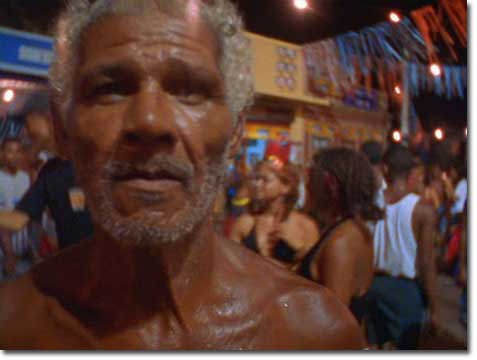Venice Biennale,
Sep 01, 2004 - Dec 01, 2004
Venice, Italy
26th International Biennial of Sí¢o Paulo, 2004
by Virginia Gil Araujo
With over 50 biennials taking place throughout the art world, the essential question that arises isn't about the current artistic production -whose repetitive character cannot be avoided - it is instead the function of a biennial, and what can it offer current day Brazil. The 26th International Biennial of Sí£o Paulo, which took place from September to December 2004, demonstrates the fragility of an institution that was started in 1951 after the Venice Biennial, becoming the second international biennial and that today suffers from successive crises, including questioning the vision of curator Alfons Hug. His vision has unearthed a product of said crisis and of the real curatorial ideas arising from the newest phenomena in contemporary art. Early on, the encouragement of visitors to the biennial en masse seemed to be a main factor in differentiating the Sí£o Paulo biennial from other biennials, even Kassel's Documenta, the largest exhibition of contemporary art in the world, taking place every five years. The 26th biennial offered free admission, and received about 900,000 visitors. This pales in comparison, however, to the 25th biennial in 2002, which received 670,000, all of them paying to enter, making it the most visited contemporary art exhibition in the world. The change in economic strategy coincided with the 450th anniversary celebration of Sí£o Paulo, in an attempt to keep in line with the city's mission to provide -culture to all- for future biennials. Despite the seeming open-mindedness of the anticipating public, many found themselves frustrated with their lack of cultural knowledge and the resulting inability to understand many of the 135 works on display due to the lack of an active education. Without a solid educational background, what does a free biennial mean to students? Wanting to be prepared for the exhibition, the public looked to the official website of the 26th biennial and found nothing there that explained the motives of the various artists. Hug had used this formula in the past biennial, with Metrópolis. On the other hand, the catalog represented the opposite for a small sector of the public, as it differentiated the artists and, truth be told, compensated for the search for credible information. At times, however, certain artworks on display didn't correspond with the images in the catalog next to the text describing them. The most glaring errors can be found on the pages describing the works of Laura Vinci and Ivens Machado. Both artists were seriously compromised by the errors in the exhibition's design. Despite the generous inclusion of 18 Brazilian artists among the 80 guest artists, the end result is a lack of accountability in diminishing the impact of the "jumble" of countries on the first floor. This floor, with a height of over seven meters and a view of Ibirapuera Park envelops yet another mistake: the Sculpture Park, informed by Alfons Hug's knowledge of the "oitocentista" period of Brazilian history, to the detriment of the contemporary art. In giving preferential treatment to the Oscar Niemeyer building, "so as to preserve the view of Sí£o Paulo's skyline and enable a dialog between the works of art and the city itself", according to the catalog, the curator diminishes the installations, which are arranged freely, as if they could be viewed as sculptures, and because of the distinctiveness of their structures they wind up contaminating each other.
|









